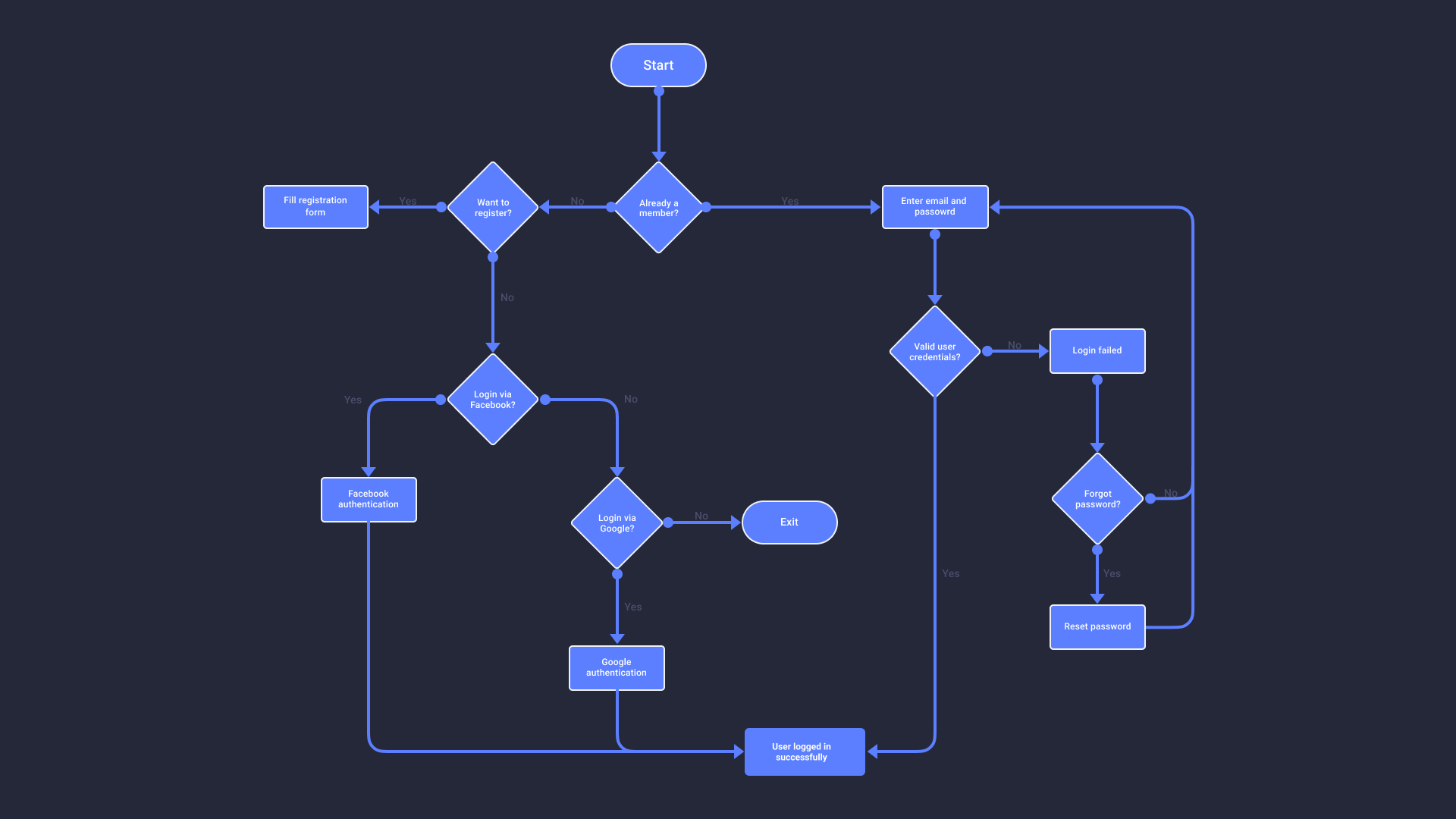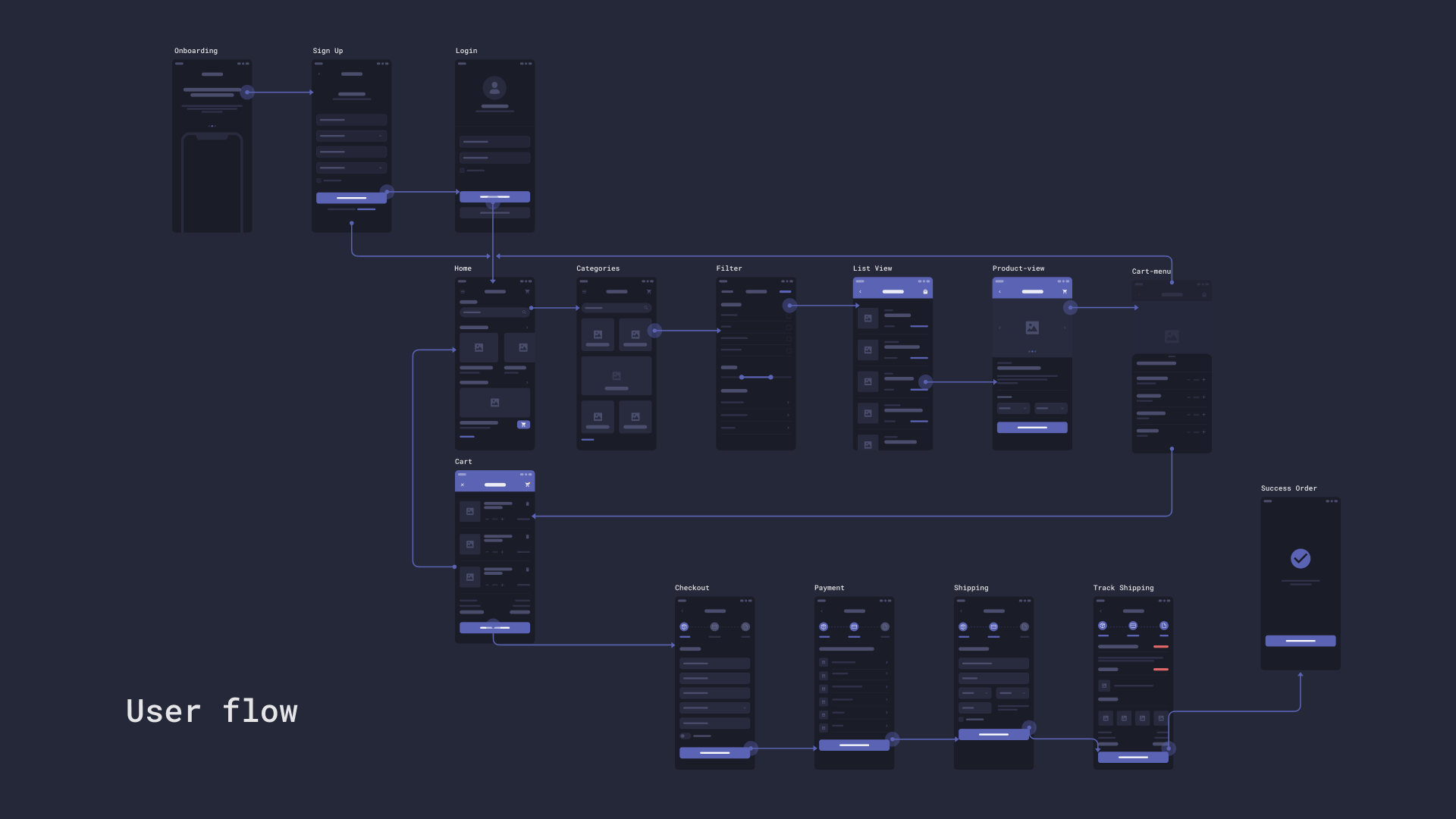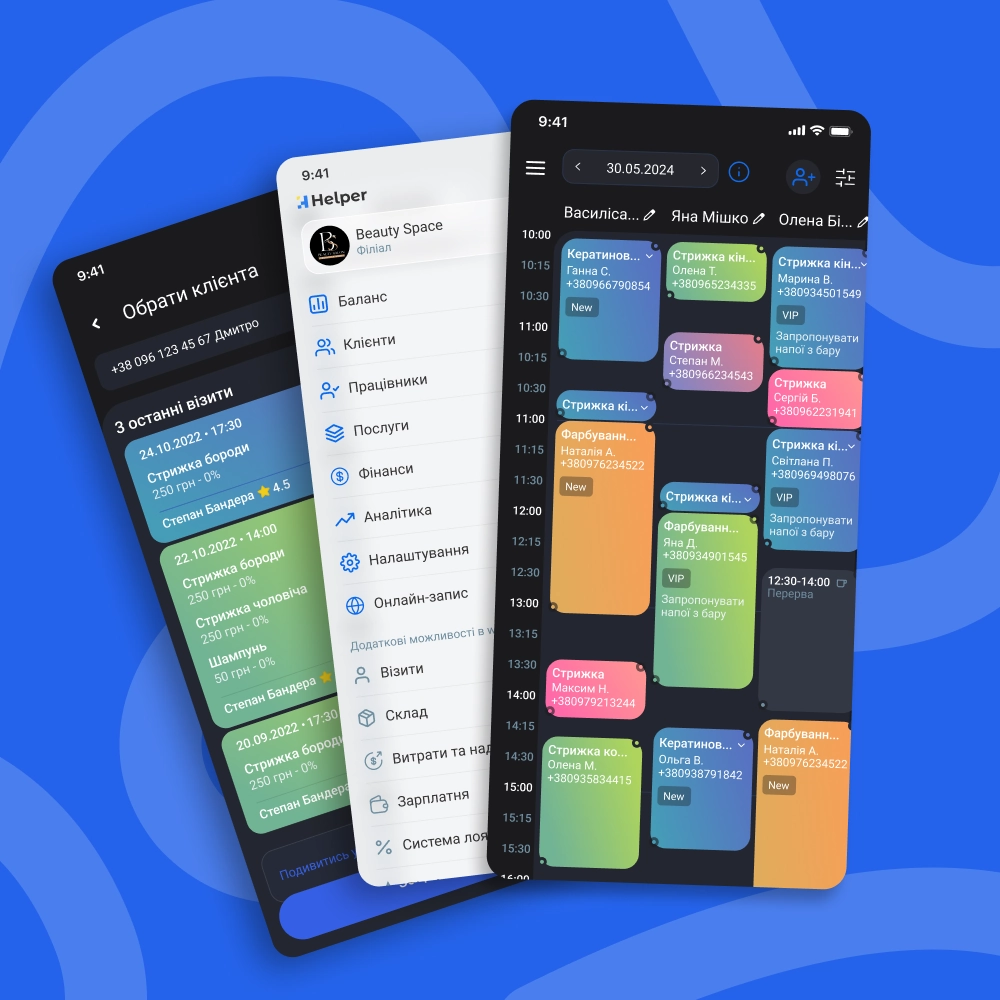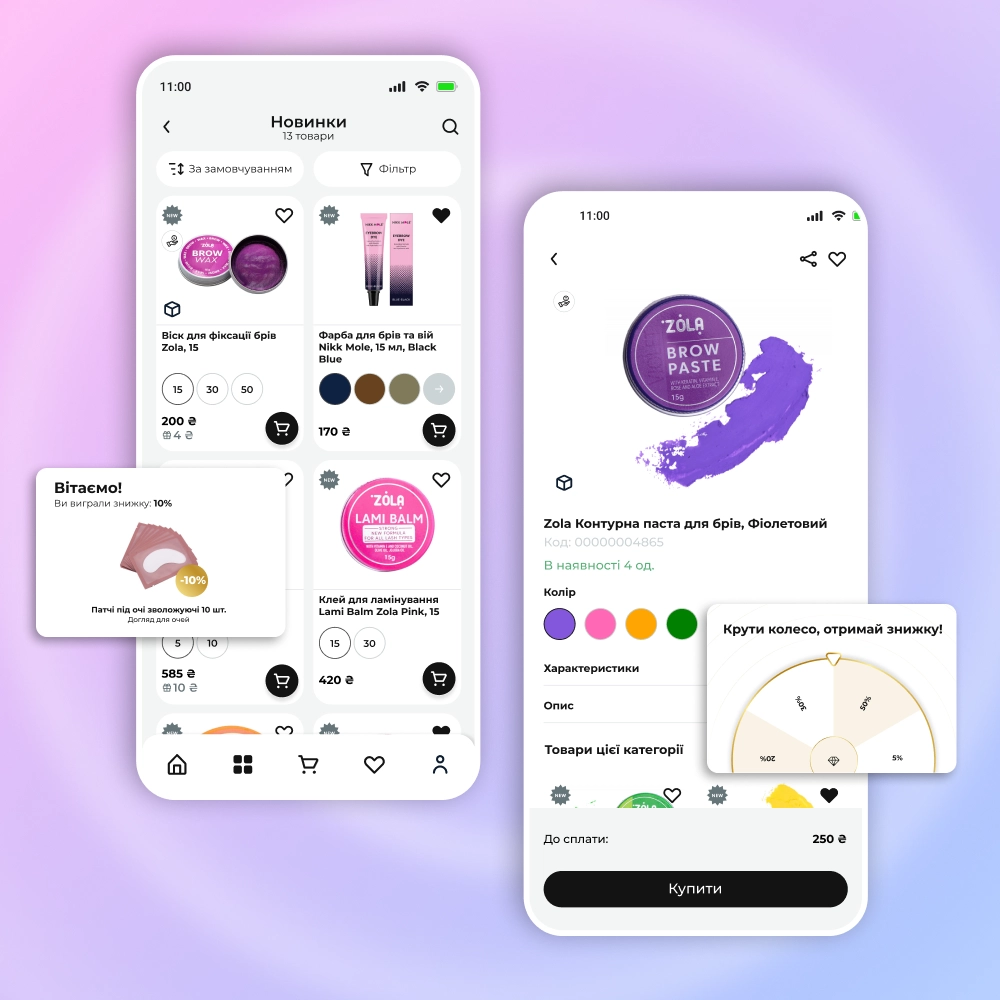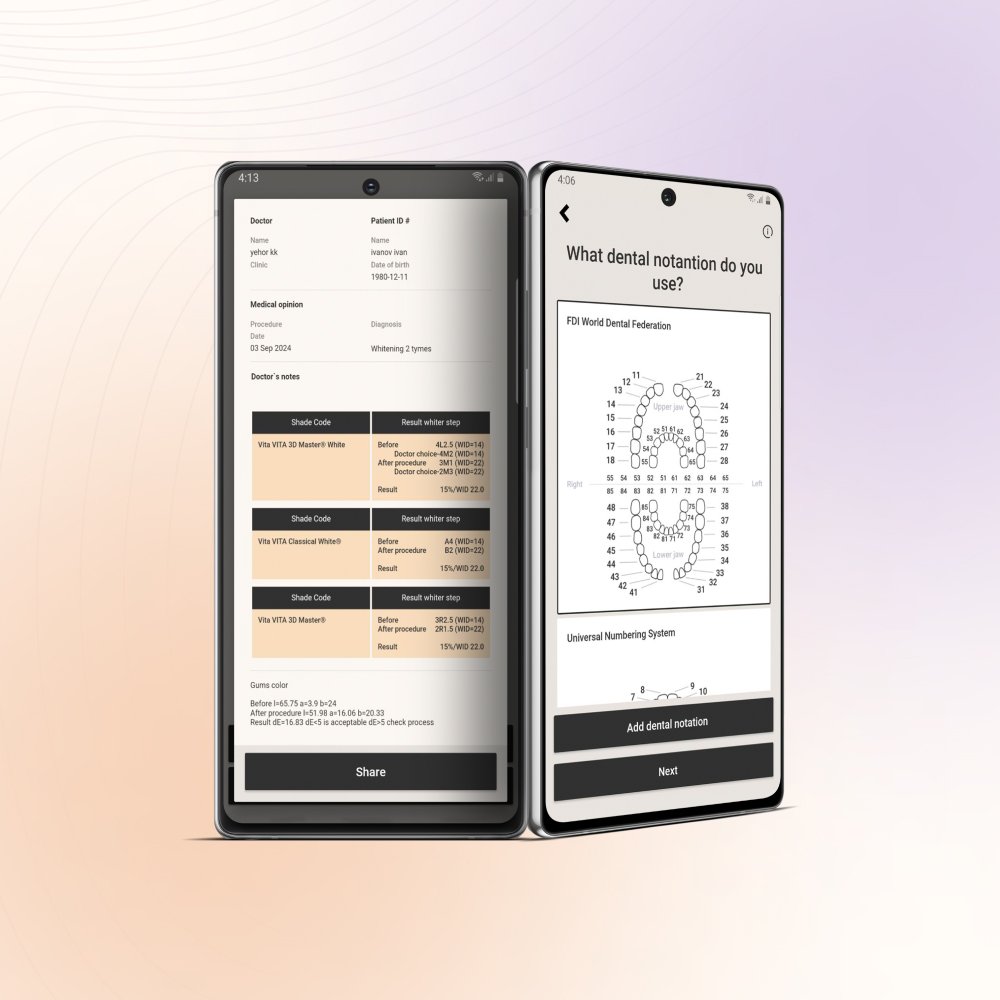








Mobile apps with AI bots, assistants and recommendations
In today's B2B applications, the decisive factors for success and efficiency are not only convenience and functionality. Users expect instant response, personalized prompts and help in making decisions. Therefore, applications now need to understand managers and customers, help and anticipate their needs.
The integration of AI bots and assistants turns a regular application into an intelligent and proactive assistant capable of improving the user experience with every step. By implementing such technologies, companies open up new opportunities to attract, increase loyalty and create unique customer experiences. Intelligent assistants become an integral part of the product, forming an impression of the business even before the user makes a purchase or leaves a request.
AVADA MEDIA develops applications with AI bots and assistants for any tasks and business areas. Our team will help implement a solution that will allow the company to be one step ahead of competitors and offer users an intelligent service.
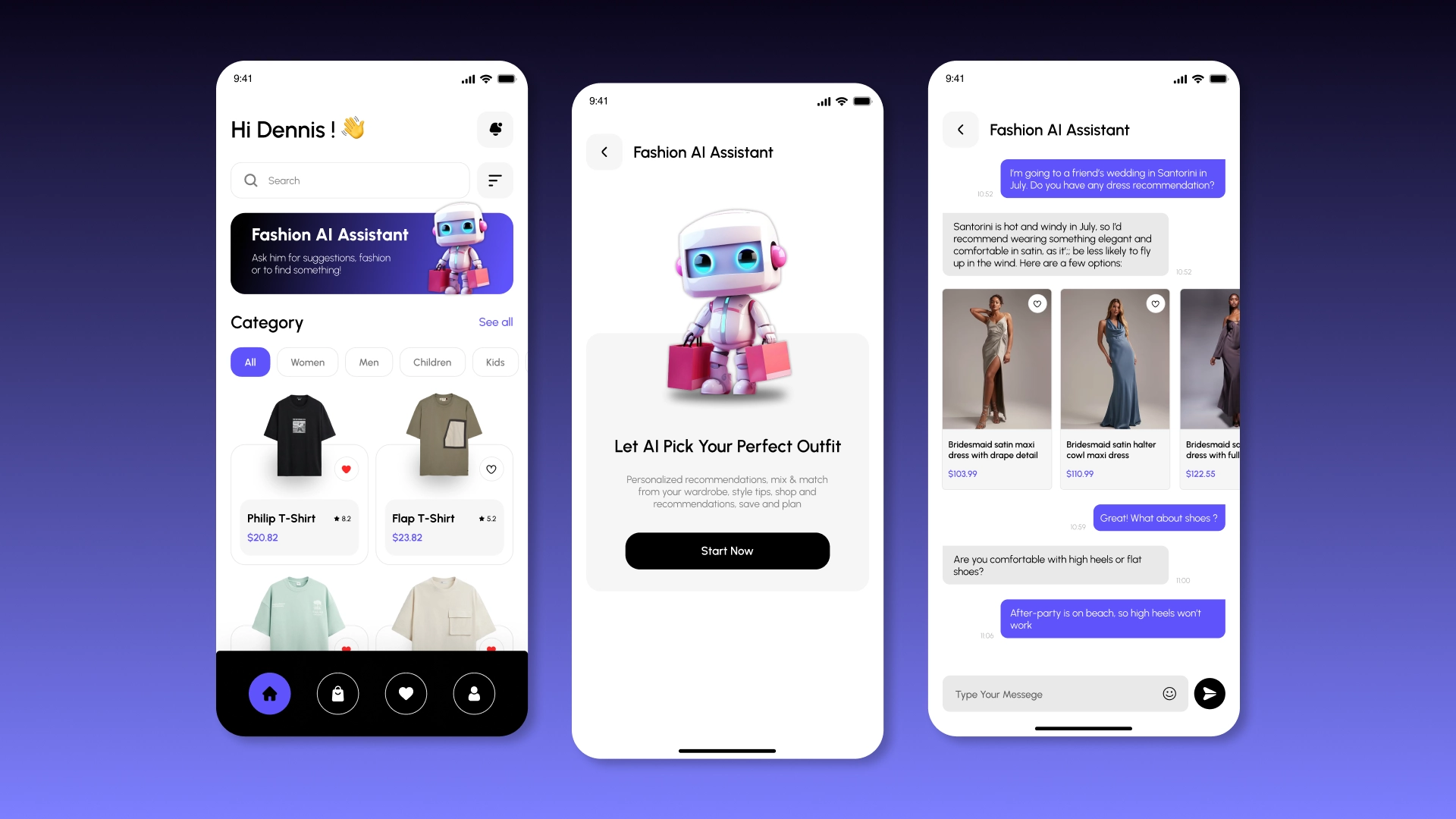
How do AI bots work in apps?
AI bots, or intelligent assistants in applications, are software modules that use artificial intelligence to automate interactions with users. They understand natural language using NLP technology, analyze data, and suggest optimal scenarios, making the application more efficient and personalized. Learn more about AI agents.
There are different types of AI bots and assistants:
- LLM agents (Large Language Models) are based on large language models (GPT, LLM, Mistral, etc.). Such AI bots are capable of conducting complex dialogues, understanding context, answering questions, conducting consultations, and helping the user make decisions. They are suitable for customer support, online consultations, and interactive scenarios.
- Voice assistants use Automatic Speech Recognition (ASR) and Text-to-Speech (TTS) technologies to process voice commands and provide responses in the desired format. Applications with voice AI agents are useful for hands-free interaction.
- AI bots for analytics and recommendations analyze user behavior and preferences, suggesting personalized content, products, or services. They use ML and Deep Learning algorithms to generate recommendations based on user actions and interests.
- Scripted assistants (workflow bots) – automate complex processes according to pre-configured scenarios. For example, they help place orders, conduct training, coordinate tasks between users or employees, and can also be augmented with AI agents to manage processes.
- Predictive and analytical AI assistants in applications use statistical methods, ML, and neural networks to predict user actions, identify trends, and optimize processes. For example, in e-commerce applications, such AI agents have the ability to forecast demand, identify risks, or select optimal solutions for a customer.
The application of these technologies allows you to create intelligent, personalized and adaptive products that improve the user experience, ensuring natural and effective interaction.
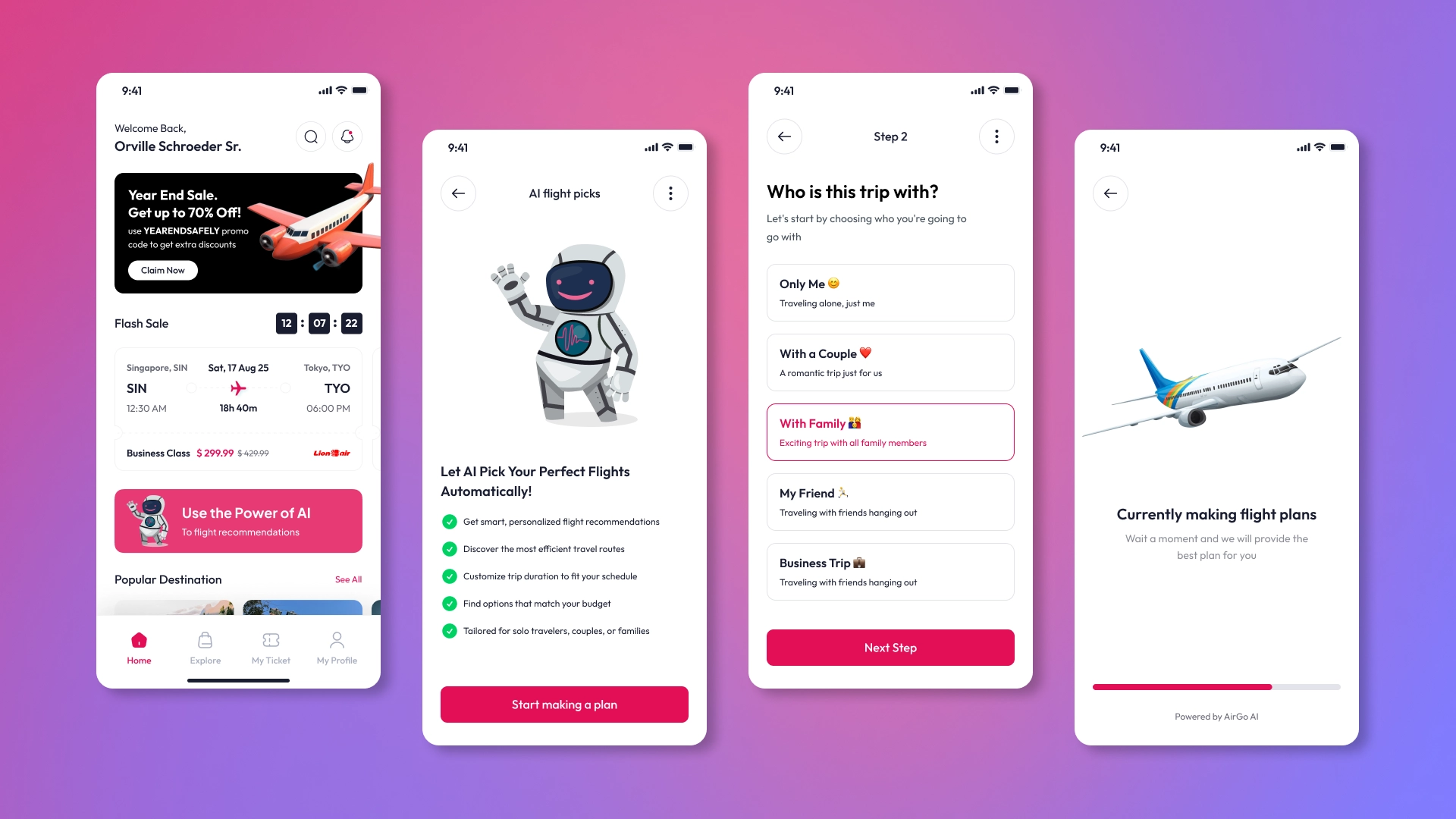
Types of applications with AI assistants and their capabilities
Each type of AI-assisted application can be tailored to specific business needs to create an interactive product with a unique set of features.
- Classic CRM systems with AI bots, in particular chat-based CRM, provide automation of interactions with customers. Intelligent bots conduct dialogues, collect requests and generate personalized offers. Integration with a database and analytical tools helps to distribute tasks between managers, track the status of requests and provide recommendations based on customer behavior and predictive models.
- ERP applications with AI assistants can automate internal company processes. AI bots manage orders, control warehouse and financial operations, coordinate the work of employees and departments, and generate real-time reports. Predictive models allow you to optimize resources, predict needs, and simplify planning.
- Online stores and eCommerce applications with AI support can provide customers with personalized product and content recommendations, consultations via chatbots, and assistance with ordering.
- 2D and 3D product and service configurators use AI bots to help users create and configure objects. Bots are able to suggest optimal configuration options, check the correctness of parameters and integrate with AR/VR to visualize projects in a real environment. Personalized tips from an intelligent bot accelerate and make working with the designer intuitive.
- Interactive services and learning platforms use AI assistants to execute learning scenarios, answer questions, and adapt content to the user's level. Predictive models select difficulty and create individual learning trajectories, and workflow bots automate task verification and statistics collection.
Other applications with intelligent features include booking services, task planners, fitness and wellness services, where AI bots advise, prompt and provide personalized recommendations. Such products can combine voice and text chat assistant functions, creating a single intelligent tool for the user.
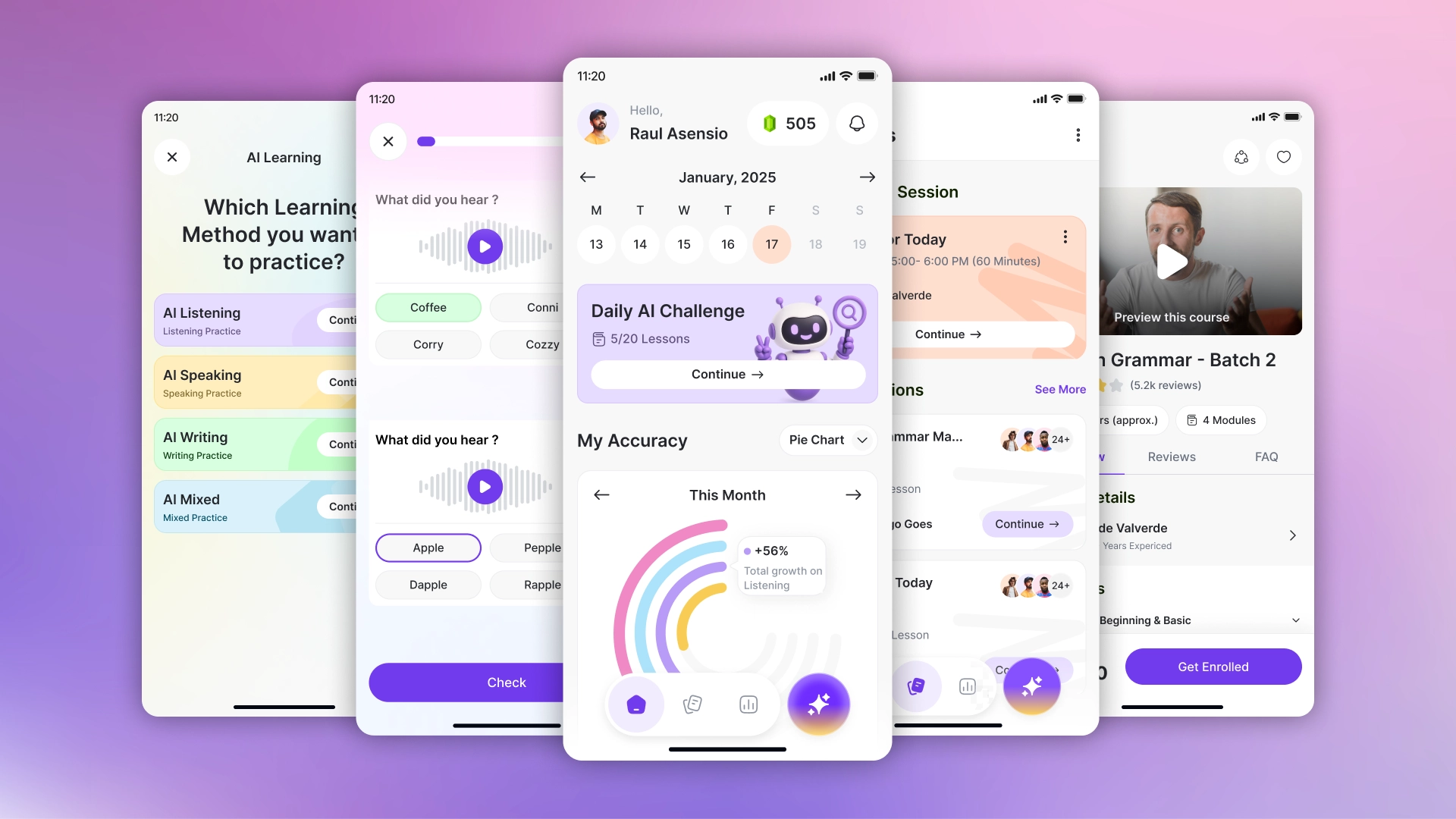
Stages of application development with an AI agent
The basis of an application with AI bots is a logical and intuitive interaction system, where artificial intelligence harmoniously complements the main functionality. The development process consists of several stages.
1. Definition of the concept
The first stage is to define the goals of developing an AI-assisted application, its mission and users. Based on this data, the optimal format is chosen: cross-platform, native or PWA application. This takes into account the conditions of use (for example, mobile CRM for field employees or customer service), accessibility for the audience, integration capabilities with other systems and the required level of interactivity.
2. Process analysis and formation of TOR
Analysts study business processes, determine the application functions and the role of the AI agent in it: what functions it will perform, what data it will use and how its work will fit into the overall logic of the application. Next, they create a technical task, which serves as the basis for the next stages of development. It describes in detail the functions and user interaction scenarios, UX requirements and integration with other systems.
3. UX/UI design and prototyping
At this stage, UX designers develop the user interface: they think through the interaction scenarios with the application and AI bots, the ease of navigation, the sequence of user actions, and the logic of the assistants. It is important that the bot's help is useful, but does not distract from the main functionality.
The design of the application begins with wireframes - schematic layouts with the structure of the screens and the location of key elements, as well as mockups that detail the visual style: colors, fonts, icons and interactive elements. To create prototypes, our specialists use modern tools - Moqups, Figma and Sketch. This allows you to demonstrate the operation of the application even before the start of development, to agree with the customer on the structure, usability of the interface and the behavior of the bot in order to make adjustments before the start of the project.
5. Application development and integration
At this stage, our developers begin implementing the application's code, including the frontend, backend, and AI bot integration.
- The front-end developer implements the interface and user interaction scenarios with the application and AI assistant. He is responsible for cross-platform, adaptive design and speed of work. He also creates visual components: control panels, forms, cards and interactive elements, implements dialogs and AI bot prompts.
- The backend developer provides data storage, business logic, and integration. It manages interaction with AI modules, user request processing algorithms, and data security. n8n is used to automate integrations and scripts between systems, making it easier to work with external services and data flows. Learn more about agent automation with n8n.
6. Implementing an AI agent
AI bot integration can include: connecting AI models, training the bot on corporate data and test scenarios, as well as configuring workflow bots and automating processes. Voice and visual modules (ASR/TTS, AR/VR) are connected, providing multimodal interaction with the user. RAG (Retrieval-Augmented Generation) is used to work with external sources - the bot is able to query and analyze information from a knowledge base, documents, CRM or other external services in real time to provide relevant, accurate and contextual answers. More details about developing an AI agent based on RAG.
7. Testing and Optimization
Before launching an application with an AI bot, comprehensive testing is carried out. QA testers check the correct operation of all modules, the stability of the system under high load, assess the usability of the interface and data security. The AI bot is tested separately - the accuracy of answers, the correctness of dialogues in various scenarios. At this stage, developers refine the functionality to ensure stable and convenient operation of the application.
8. Launching the application and learning
After successful testing, the application is deployed on the server and ensures smooth integration into business processes. If necessary, training is provided and instructions are developed for employees.
9. Support and updates
Further support is provided at the client's request and includes updates, bug fixes, and adaptation to new business challenges. Support also includes analyzing analytics, adjusting interaction scenarios, and improving the interface. AI bots in applications learn from new data, gradually adapting to requests, and improving the quality of responses.
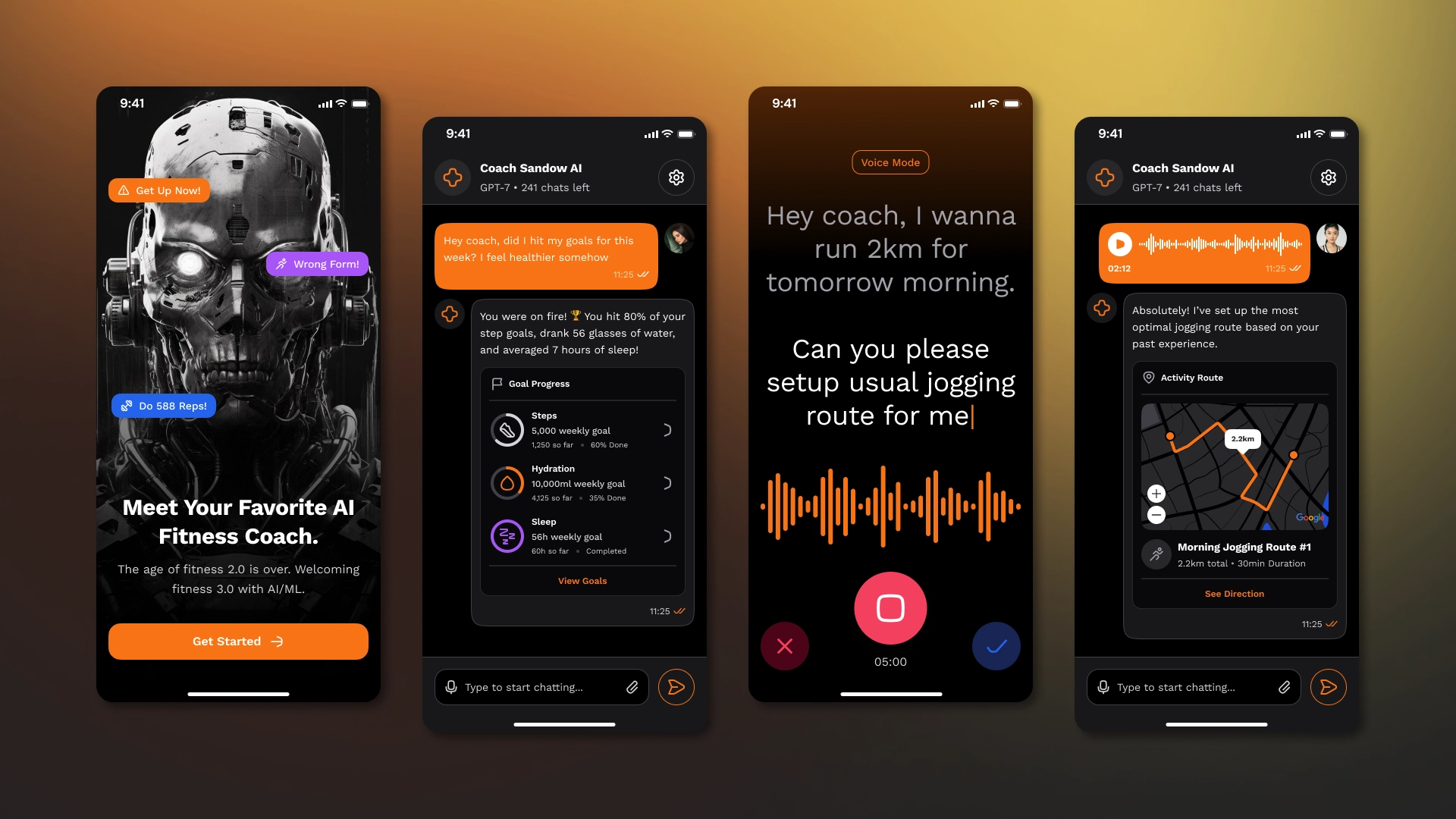
What are the benefits of applications with AI agents?
Applications with AI bots and assistants are changing the approach to customer interaction and process management. They make the service more flexible, personalized and convenient, and the business more technological and competitive. Among the key advantages of such solutions:
- Save time and resources. AI bots take on repetitive tasks and thereby reduce the burden on employees, allow them to focus on strategically important tasks, reduce operating costs and increase the efficiency of the entire team.
- Improving customer service. AI bots provide instant and accurate answers 24/7. Personalized dialogues and quick response to requests create a positive interaction experience, increase loyalty and strengthen the company's reputation.
- Conversion growth and real-time analytics. AI assistants that analyze user behavior, their preferences, and purchase history can offer the most relevant products or content, increasing the likelihood of purchase and the average check. For example, an AI assistant in a 3D/2D repair configurator can suggest additional decor elements. In addition, data about the needs and behavior of your audience will become valuable insights for further business development.
- Reducing errors. Algorithms process large amounts of data faster and more accurately than humans, eliminating errors in calculations, filling out documents, and processing requests. This is especially important for finance, logistics, and medicine.
- Scalability without additional costs. AI bots easily adapt to business growth: they serve more customers without increasing staff and costs for employee training.
Developing an application with an intelligent agent shows that the company is keeping up with the times and is ready to invest in improving service and technological capabilities. This strengthens its market position, reputation, and trust of customers and partners.
Why is it worth ordering application development from AVADA MEDIA?
For more than ten years, our team has been developing comprehensive solutions for business automation, including the implementation of artificial intelligence. This experience allows us to deeply understand the specifics of various industries and create the most effective custom tools.
We always focus on optimal terms and reasonable cost, while ensuring high code quality and stability of solutions . Our applications are easily scalable, integrate with existing systems and remain relevant in the long term. We support the project at all stages, allowing the client to receive a full range of services in one place.
Cooperation with AVADA MEDIA guarantees the development and implementation of a stable and effective product that will emphasize the innovative image of your business. Contact us today to order an application with an AI bot and discuss its implementation plan.
FAQ
-
How is an AI bot in an app different from a regular chatbot?
Conventional chatbots work according to predefined scenarios and quickly “break” if the user asks a question outside the script. AI-bots are based on machine learning models and are able to analyze the context, learn from new data and give more accurate and natural answers. Such an assistant does not just execute commands, but can also conduct a dialogue, adapt to the user and help make decisions.
-
Can a bot be trained on closed corporate data?
Yes, this is done using RAG technology, where AI uses the company's internal knowledge bases. This means that the bot can respond as accurately as possible, using up-to-date documents, instructions, and data. Access to corporate data is configured through secure APIs and access rights, which allows maintaining a high level of security.
-
Will the bot understand multiple languages and localizations?
Yes, modern AI models support multilingualism, which makes it possible for a bot to work in several languages at once. This allows you to not only translate the interface, but also create communication scenarios for different audiences.
-
Will the application with an AI agent work without an internet connection?
PWA application is available even when offline or with unstable connections. When the connection is restored, the data is synchronized and the bot continues to work without losing context.
-
How long does it take to develop and implement such an application?
The term depends on the complexity of the project and the set of features. For an MVP version with basic functionality, 3-4 months is enough. A full-fledged comprehensive solution with custom integrations, RAG models, and multilingual support can take from six months or more.
-
Can an AI bot make mistakes?
Yes, like any intelligent system, an AI bot can give inaccurate answers. This often depends on the quality of the training data and the context of the query. To minimize risks, we set up mechanisms for verification, scenario testing, and continuous model training.
-
What to do if the bot doesn't find the exact answer?
In such cases, the bot can use fallback mechanics: redirect the request to an employee, offer the closest relevant option, or clarify details with the user. This approach ensures seamless interaction and eliminates customer loss.
-
How much does it cost to develop an AI application?
The cost depends on the complexity of the project: the technologies chosen, the number of integrations, the level of customization, the complexity of the design. You can start with an MVP to test hypotheses and give the business a quick result, and then scale the system.




